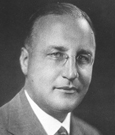The connection between smoking and lung cancer is universally accepted as scientific fact, and those who choose to smoke are painfully aware of the risk it poses for addiction and subsequent cancer. However, to fully appreciate the significance of the Surgeon General’s report, one must turn back to a period when cigarette smoking was aggressively promoted and ingrained into our social fabric.
In 1964, when the Surgeon General’s report was issued, some 46% of American adults smoked cigarettes; they were cheap and easy to buy. Seductive ads featuring celebrities were ubiquitous, even popping up during popular children’s TV shows, such as The Flintstones. Imagine the challenge of trying to convince half the country that their enjoyable, publically accepted behavior was, in fact, a road to suffering and premature death.
Dogged Researchers
It’s worth noting that the causal relationship between cigarettes and disease was on the medical radar long before the 1964 Surgeon General’s report. From the opening of the 20th century, when cigarettes attained social status, a growing number of critics warned of the dangers of smoking. However, opposition to smoking would gain little ground until a medical student named Ernst Wynder became convinced that smoking caused lung cancer.
Ernst L. Wynder, MD, was born in 1922 in Herford, Germany, to Jewish parents who fled to New Jersey in 1938 to escape Nazi persecution. A precocious student, he whipped through high school and entered Washington University in St. Louis to study medicine. During a summer internship at New York University, Dr. Wynder’s interest in lung cancer was first aroused when he attended an autopsy of a two-pack-a-day smoker who had died of lung cancer. Seeing a plausible a connection between cigarettes and lung cancer, he began collecting case histories of lung cancer victims in New York and St. Louis.
Dr. Wynder’s dogged research caught the attention of well-known thoracic surgeon Evarts Graham, MD, a heavy smoker himself. Despite Dr. Graham’s initial skepticism, he granted access to his extensive case histories and agreed to sponsor the young medical student. Their relationship culminated in a seminal JAMA paper in 1950: “Tobacco Smoking as a Possible Etiologic Factor in Bronchiogenic Carcinoma: A Study of 684 Proven Cases.”1
Landmark Paper
This wasn’t the first study to link smoking to cancer, but its sophisticated design and meticulous findings garnered attention and signaled a need for more research. Equally important, it began a sea change in the medical culture, persuading doctors—many of whom smoked—of the health risks associated with cigarettes. Dr. Graham kicked the habit in 1952, but owing to his many years of smoking, he died of lung cancer in 1957.
Dr. Wynder’s JAMA publication was later declared a landmark research paper in 1985 and 1992. It had preceded the Surgeon General’s report by 14 years, serving as a launching pad for the national smoking cessation initiative. Dr. Wynder devoted his entire career to the study and prevention of cancer, publishing more than 770 articles on worldwide cancer epidemiology as it related to tobacco use. He died on July 14, 1999, at the age of 77. ■
Reference
1. Wynder EL, Graham E: Tobacco smoking as a possible etiologic factor in bronchiogenic carcinoma: A study of 684 proven cases. JAMA 143:329-336, 1950.



